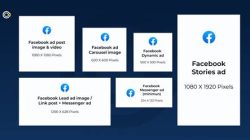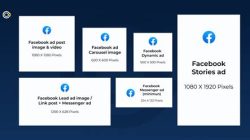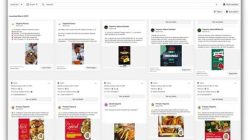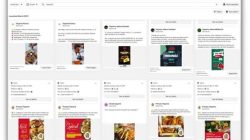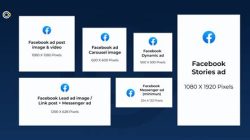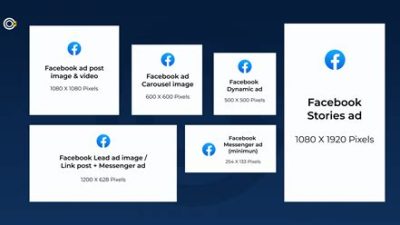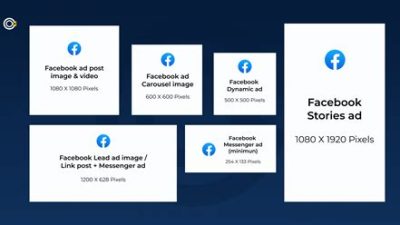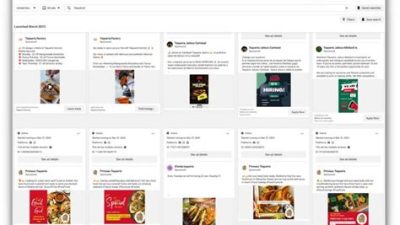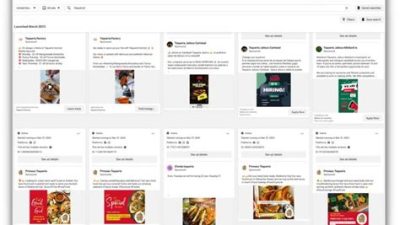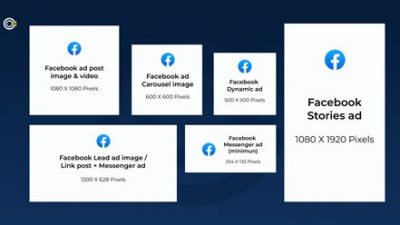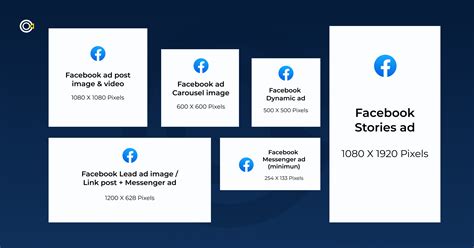
Hey there! If you’ve ever tried your hand at creating Facebook ads, you’ve probably stumbled upon all those confusing size requirements and dimensions. Don’t worry, you’re not alone! This article is here to break it down for you in a relaxed and easy-to-understand way. From images to videos, we’ll cover everything you need to know about Facebook ad dimensions so you can create ads that look great and get results!
Understanding Facebook Ad Formats
Facebook offers a variety of ad formats, each designed to achieve different marketing objectives. These formats include image ads, video ads, carousel ads, slideshow ads, and more. Understanding each format is crucial for optimizing your ad’s performance. Image ads are straightforward; a single image captures the audience’s attention and can drive engagement effectively. They’re ideal for branding and product promotion, requiring high-quality visuals to stand out in crowded feeds.
Video ads, on the other hand, are perfect for storytelling and can be incredibly engaging. With the rise of video content, Facebook users are more inclined to watch videos, making them a great choice to convey more complex messages or demonstrate product usage. Carousel ads allow marketers to showcase multiple images or videos within a single ad, letting users swipe through them—perfect for highlighting different products or features. Slideshow ads, which use a series of images to create a video-like experience, are a fantastic option for advertisers with limited video resources.
As you ponder over your chosen format, keep in mind the different dimensions associated with each. It’s not just about choosing the right type of content, but understanding how to format it correctly for optimal display across devices. Will you use just a stunning image, or will you opt for a more immersive video experience? The choice of format can significantly impact user engagement and ultimately determine the success of your advertising campaign.
Facebook Ad Image Dimensions
When it comes to image dimensions for Facebook ads, getting the size right can make all the difference between a successful ad and one that falls flat. Facebook provides specific guidelines for different types of ads, each with its own recommended dimensions to ensure that your visuals appear clear and compelling. For instance, a standard image ad should ideally have a resolution of 1200 x 628 pixels. This size is perfect for news feed ads, ensuring that your images load quickly and look professional.
Additionally, when creating image ads, it’s also important to consider the aspect ratio, which is typically 1.91:1 for most feed ads. By adhering to these specifications, not only do you enhance the visual appeal of your ads, but you also improve the likelihood that they’ll perform well in various placements across the platform, like Instagram and Facebook Stories. Consider using tools like Canva or Adobe Spark to create eye-catching graphics that fit these dimensions flawlessly.
Moreover, keep in mind the text overlay on images, as Facebook restricts text to occupy no more than 20% of your ad image. This is vital to ensure that your ads are not rejected and can effectively reach your target audience. A well-optimized image ad that captures attention while adhering to these specifications can significantly increase the chances of conversion, whether it’s driving traffic to your website, generating leads, or boosting sales.
Facebook Video Ad Dimensions
Video ads on Facebook are becoming increasingly popular and for good reason—they’re engaging! However, just like image ads, video ads come with specific dimension requirements that marketers must follow to achieve optimal results. The most effective video dimensions for Facebook feed ads should have an aspect ratio of 16:9 or 1:1 for square videos. A typical resolution could be 1280 x 720 pixels for landscape videos, ensuring clarity and brightness that attracts the viewer’s eye right away.
Another widely accepted format for video ads is the 4:5 aspect ratio, which works well in mobile news feeds. It’s important to note that mobile optimization is vital since a significant majority of Facebook users access the platform via their smartphones. Thus, creating videos that perform well on mobile ensures a broader reach and higher engagement rates. Make sure your events, promotions, or updates are highlighted early in the video to hook viewers’ attention right away!
Moreover, when working on video ads, consider the total length of the video. Facebook recommends keeping video ads to a maximum of 15 seconds for optimal engagement. With short attention spans, concise and captivating content performs better. Add subtitles or text overlays to convey your message, especially because many users watch videos on mute. So, understanding these dimensions not only helps in enhancing visibility but also significantly boosts the effectiveness of your campaigns on Facebook.
Facebook Ad Carousel Dimensions
Carousel ads provide a unique opportunity to showcase multiple images or videos in a single advertisement, allowing users to swipe through a series of visuals. For these ads, Facebook recommends an image dimension of 1080 x 1080 pixels with an aspect ratio of 1:1. This format makes your carousel visually appealing and ensures a consistent look across all displayed content. Carousel ads can be particularly effective for product catalogs, promotional offers, or telling a story that unfolds across multiple slides.
Since each card within a carousel can link to a different webpage, you can drive traffic to various landing pages. This level of versatility cannot be understated; it allows for targeted messaging for different segments of your audience. By providing users with multiple calls to action, you optimize the chances of them engaging with your content—be it visiting a site, making a purchase, or exploring a brand further.
When creating carousel ads, remember to maintain a theme or narrative across your slides to keep viewers engaged. This coherence enhances the user experience, making it more likely that viewers will swipe through to see all of your offerings. Adding engaging copy to each slide can also improve interaction, guiding viewers through the carousel. The combination of attractive images, optimized dimensions, and compelling narratives positions your carousel ads as a prominent tool that can elevate your Facebook marketing strategy.
Best Practices for Facebook Ad Dimensions
Now that we’ve covered the specifics of various ad dimensions, it’s time to delve into some best practices to ensure your Facebook ads shine. One of the most crucial aspects is to always keep up with Facebook’s recommended specifications, as they may change over time. Regularly reviewing these guidelines can help ensure that your ads remain compliant and effective across different platforms and devices.
Using high-quality images and videos is another essential practice. Blurry or pixelated visuals can drive users away rather than attract them. Consider investing in professional photography or quality graphic design when creating your ad campaigns to maintain a polished brand image. Additionally, consider A/B testing different image sizes and formats to see which performs best with your audience. Experimentation is key in understanding what resonates with your viewers.
Lastly, focus on creating a captivating call to action. The dimensions can be perfect, but if the message doesn’t resonate or compel users to act, you may miss out on conversions. Make your CTA clear, concise, and visually appealing. Incorporating an attractive button or prompt can help guide users toward taking the next step in their buyer journey. Remember, consistently monitoring performance analytics and making necessary adjustments will help you optimize future campaigns effectively.
Understanding Facebook Ad Dimensions
1. The Importance of Correct Dimensions for Ads
When crafting a Facebook advertisement, getting the dimensions right is crucial for several reasons. First and foremost, proper dimensions ensure that your ad displays optimally across different devices, including desktops, tablets, and smartphones. A well-structured ad draws attention, showcases products effectively, and encourages users to engage. If your ad’s dimensions are incorrect, it may get cropped or pixelated, potentially leading to a loss of message clarity and interest from potential customers. Furthermore, Facebook has specific guidelines and requirements for each ad format. Following these rules not only enhances visual aesthetics but also ensures that your ads remain compliant with Facebook’s advertising policies. In a way, proper ad dimensions could be seen as a reflection of professionalism and care for consumer experience. Ultimately, whether you’re promoting a new product, generating leads, or increasing brand awareness, properly designed ads can significantly impact your overall campaign success on the platform.
2. Key Dimensions for Image and Video Ads
Facebook offers a variety of ad formats, each with its unique dimensions that advertisers need to consider. Below is a handy reference table that outlines some of the most popular Facebook ad dimensions for images and videos:
| Ad Format | Recommended Image Dimensions | Aspect Ratio |
|---|---|---|
| Single Image Ad | 1200 x 628 pixels | 1.91:1 |
| Video Ad | 1280 x 720 pixels | 16:9 |
| Carousel Ads | 1080 x 1080 pixels | 1:1 |
| Collection Ads | 1200 x 628 pixels | 1.91:1 |
| Slideshow Ads | 1200 x 720 pixels | 16:9 |
It’s essential to stick to these dimensions for both images and videos to avoid any unexpected cropping or loss of important content. Keeping these specifications in mind can significantly improve your ad’s visual appeal, making it more likely to engage users and generate clicks or conversions. Ensure that your creatives are not just the right size, but also visually appealing to catch the attention of scrolling users. Remember, a picture is worth a thousand words, and an effective ad can be the difference between a potential customer scrolling on or stopping to engage.
3. Ad Placement and Its Impact on Dimensions
Facebook ads can appear in various placements, and understanding how these placements affect dimensions is crucial for optimizing your advertising strategy. Main ad placements include the Facebook News Feed, Instagram Feed, Facebook Right Column, and Audience Network. Each of these placements has its unique dimensions and aspect ratios, influencing how your ad appears to users. For instance, ads on the Instagram Feed traditionally favor square or vertical images for optimal display, while ads on the Facebook Right Column typically display in a rectangular format. Failing to adapt your visual content to each specific placement can lead to compromised visibility and engagement opportunities. Therefore, it’s wise to tailor each ad creative to fit the desired placement accurately. This tailored approach enhances user experience and boosts your ad’s overall effectiveness. Don’t forget to preview your ads in various placements using Facebook’s ad preview tool, which helps ensure that everything looks just right before hitting ‘publish.’
4. Best Practices for Designing Your Ads
Creating compelling ads isn’t solely about getting the dimensions correct; it also involves following best practices for design and message delivery. First and foremost, prioritize high-quality images that are not only clear but also relevant to your brand or product. You should also consider including a catchy headline or relevant text that immediately grabs attention. Utilizing bold or contrasting colors can help your ad stand out in users’ feeds, but be cautious not to overdo it, as overly busy visuals can be overwhelming. Furthermore, incorporating your brand’s logo or standard color scheme can enhance brand recognition and trust. Another critical factor is to ensure that your call-to-action (CTA) is clear and persuasive; words like “Shop Now,” “Learn More,” or “Sign Up” should stand out. It’s also essential to test different versions of your ads to see which designs yield the best engagement. This approach is known as A/B testing and can provide valuable insights into your audience’s preferences.
5. Frequently Asked Questions about Facebook Ad Dimensions
Q1: What’s the best image size for Facebook ads?
The best image size for Facebook ads is 1200 x 628 pixels for single image ads, ensuring optimal display across devices.
Q2: Are there different dimensions for Instagram ads?
Yes, Instagram ads generally prefer square (1080 x 1080 pixels) or vertical (1080 x 1350 pixels) formats for optimal visibility.
Q3: Can I use animated images for Facebook ads?
Absolutely! Facebook supports animated images (GIFs) in ads, but ensure they comply with size and format specifications.
Q4: What file formats are accepted for Facebook ads?
You can use JPG, PNG, and GIF formats for images, while video ads can be in MP4 or MOV format.
Q5: How important is the aspect ratio?
The aspect ratio is crucial as it affects how your ad appears across different placements. Make sure to adhere to the recommended standards for each format.
Q6: What is the maximum file size for Facebook ads?
The maximum file size for images is 30 MB, while for videos, it can go up to 4 GB depending on the length.
Q7: Can text overlap the image in Facebook ads?
Text can overlap, but Facebook’s algorithm may reduce your ad’s reach if the text exceeds 20% of the image area.
Q8: How do I edit my Facebook ad dimensions?
To edit ad dimensions, use Facebook’s Ads Manager where you can upload new creatives or adjust existing ones based on required dimensions.
Q9: Do dimensions affect ad performance?
Yes, using the correct dimensions can significantly impact your ad performance by improving engagement and click-through rates.
Q10: What’s the best dimension for carousel ads?
The best dimension for carousel ads is typically 1080 x 1080 pixels to maintain consistency and clarity across the display.
Q11: Can I use my website images for ads?
While you can use website images, ensure they meet the quality and dimension specifications for Facebook ads to avoid compromising their appearance.
Q12: How do I optimize video ads for different devices?
Optimize video ads by keeping resolutions high (minimum of 1280 x 720 pixels) and ensuring they are vertically oriented for mobile users.
Q13: What if my images are too large or too small?
If your images are too large or small, you can use image editing software or online tools to resize them to conform to the required dimensions.
Q14: Are there differences between mobile and desktop ad dimensions?
Yes, mobile ad dimensions often favor vertical formats, while desktop ads might display better in wider, landscape arrangements.
Q15: How often should I update my ad graphics?
It’s a great practice to refresh your ad graphics every few months to prevent ad fatigue and maintain audience interest.
Thanks for Tuning In!
We hope you found this info on Facebook ad dimensions helpful and easy to digest! Remember, getting your ad size just right can make all the difference in catching eyes and sparking interest. If you have any more questions or need tips, feel free to swing by again. Thanks for reading, and we can’t wait to see you back here soon!
